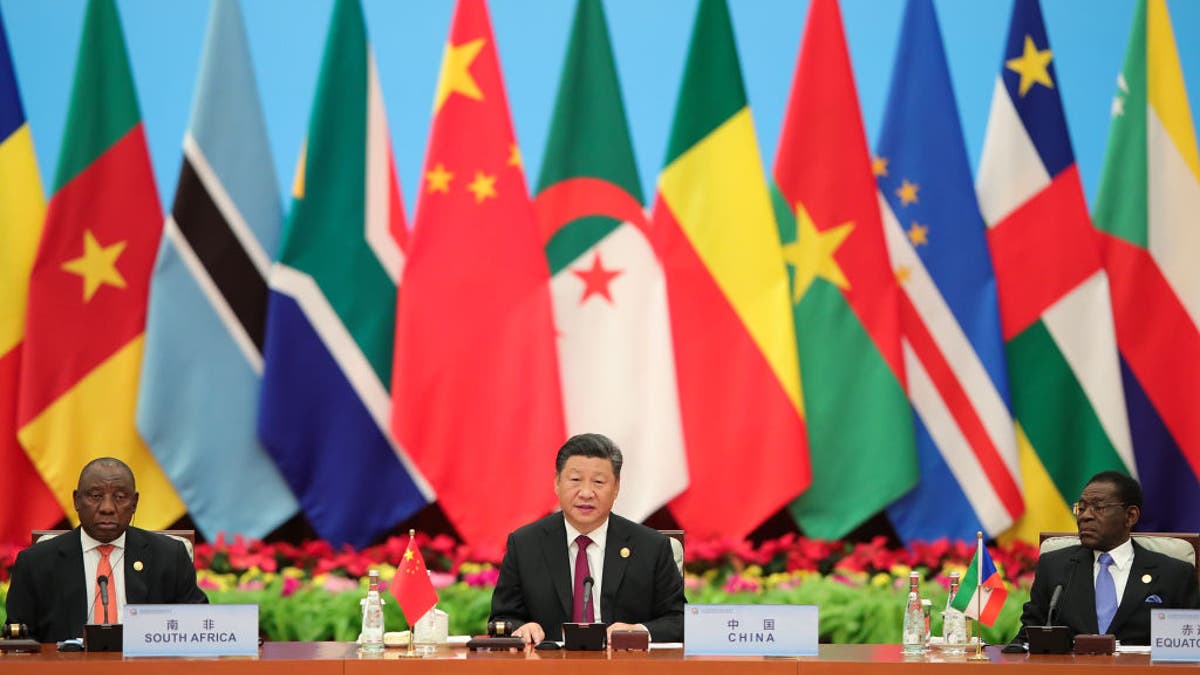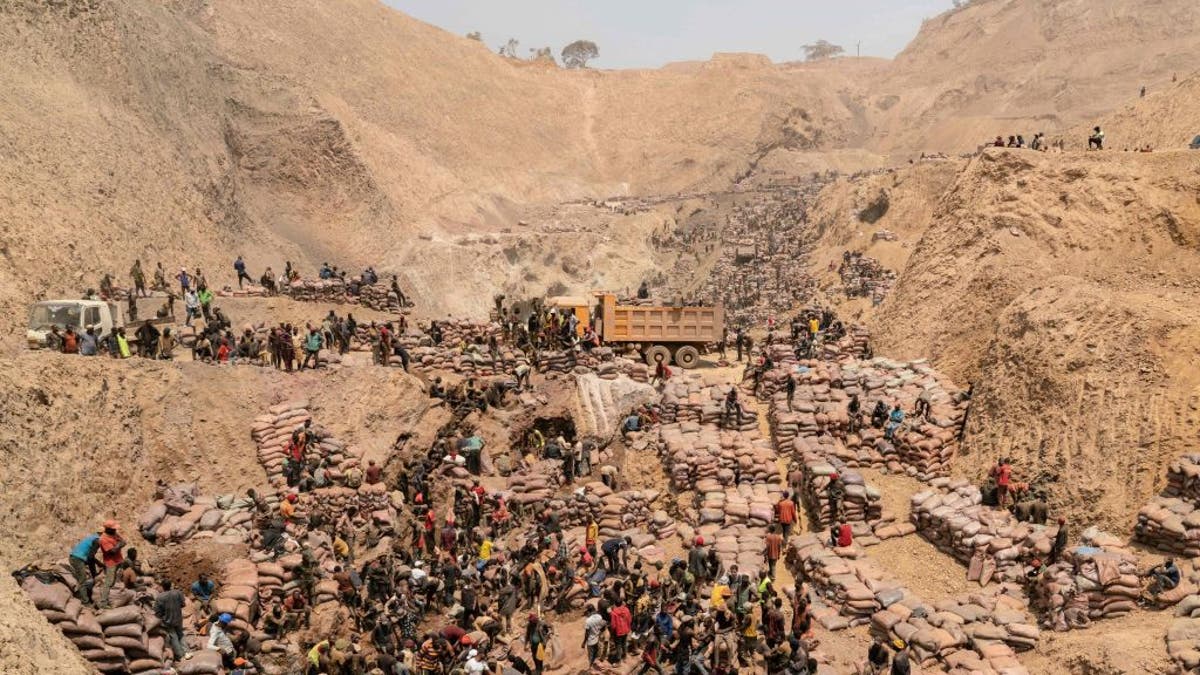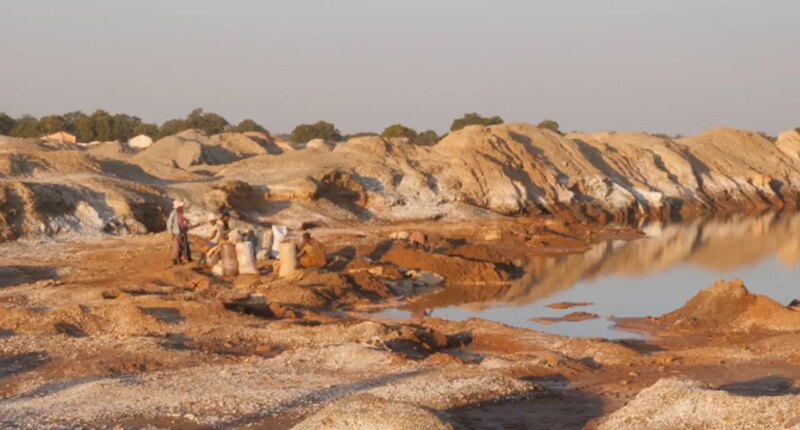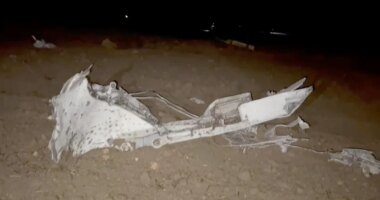Share this @internewscast.com
The U.S. State Department is actively working to mitigate the national security risks posed by China’s dominance in the rare earth minerals market. This effort involves leveraging potential partnerships with African nations, a move that could help loosen Beijing’s grip on this critical industry.
Rare earth elements, a group of 17 metals, are essential for a range of applications, from consumer electronics like smartphones and computers to renewable energy technologies like wind turbines and electric vehicle batteries. They also play a crucial role in national defense systems, including jet engines, missile guidance, and satellite operations, as highlighted by the Brookings Institution in 2022.
Currently, China controls approximately 60% of the world’s rare earth mineral extraction and 85% of its processing capacity, according to Brookings. This near-monopoly positions China as a formidable player in the global market.

However, Africa holds a wealth of untapped resources that could challenge China’s supremacy. Although China has secured mineral contracts in the Democratic Republic of the Congo, transporting materials like cobalt back east, the continent stands on the brink of a mining boom. The African Union’s Minerals Development Center recently announced that significant rare earth mines are expected to begin operations by 2029 across Tanzania, Angola, Malawi, and South Africa, potentially supplying nearly 10% of the global market.
In response, the U.S. is intensifying its efforts to expand its influence in Africa’s mining sector. A State Department spokesperson recently emphasized to Fox News Digital that the current administration is focusing on forging partnerships with African countries. The goal is to redirect the flow of these valuable minerals westward, away from China, thereby enhancing U.S. strategic interests in the region.
This is leading the Trump administration to step forward with new attempts to expand the U.S. presence in Africa’s mining trade. Just this week, a State Department spokesperson told Fox News Digital, “The administration’s approach prioritizes partnerships with African nations to ensure their minerals flow west, not east to China.”
In Africa, China is on Washington’s threat radar, with the spokesperson continuing, “China’s dominance in global mineral supply chains — specifically in processing and refining — is a threat to both U.S. and African interests. Beijing’s state-directed strategies exploit Africa’s natural resources, consolidate control over upstream mining assets, perpetuate opaque governance structures, degrade local environments and create economic dependencies that undermine regional stability.”

China’s President Xi Jinping (C) speaks as South Africa’s President Cyril Ramaphosa (L) and Equatorial Guinea’s President Teodoro Obiang Nguema Mbasogo (R) look on, during the Forum On China-Africa Cooperation. 4, 2018. (Lintao Zhang/AFP via Getty Images)
Various sources say that the U.S. currently imports some 70% of all the rare earth elements it needs from China.
Chairman of the Senate Foreign Relations Committee, Sen. Jim Risch, R-Idaho, told Fox News Digital that Beijing poses a threat on this issue: “Relying on China for critical minerals needed for a modern economy is a top national security risk that President Biden left unaddressed for four years. Under President Trump’s leadership, we can secure new sources in Africa, strengthen our partnerships there, and ensure America’s defense is never dependent on our adversaries.”
The administration is trying to move more into Africa, with the State Department spokesperson adding, “The United States is committed to making targeted investments in infrastructure to facilitate the export of minerals from Africa to global markets. A prime example is the Lobito Corridor, which provides an alternative to Chinese-controlled transportation routes for minerals from Africa’s Copperbelt to the Atlantic Ocean.”

A picture of artisanal miners working at a cobalt mine in the DRC on Oct. 12, 2022. (Junior Kannah/AFP via Getty Images)
The administration recently said they would continue to pledge a $550 million loan to the development of the Lobito Corridor, an 800-mile-long railway and infrastructure to the link mineral-rich regions of the Democratic Republic of the Congo and Zambia with Angola’s Atlantic coast and easy shipping access to the U.S.
The State Department spokesperson went on to say that one of the main benefits of the peace deal to end a 30-year-long war signed between the DRC and Rwanda in the Oval Office in June is better access to minerals, adding, “The bilateral agreement between the U.S. and DRC is designed to open the door for new U.S. and U.S.-aligned investments in strategic mining projects across the DRC.”
It is a new dawn of opportunity for the U.S. in Africa, analysts including Dr. Gracelin Baskaran says. Baskaran, director of the Critical Minerals Security Program at Washington’s Center for Strategic and International Studies, told Fox News Digital, “Africa is the last great frontier of mineral discovery. It has long been undervalued in global mineral exploration, even though it delivers some of the highest returns per dollar invested.”

A sign at the Tanzania-Zambia Railway Authority (TAZARA) memorial park in Lusaka, Zambia, on Thursday, Sept. 21, 2023. For over a decade, China poured more than $120 billion of government-backed loans through its Belt and Road Initiative to build hydropower plants, roads and rail lines across the continent as well as unparalleled influence. (Zinyange Auntony/Bloomberg via Getty Images)
“The [African] continent’s share of worldwide exploration spending has steadily dropped — from 16% in 2004 to only 10.4% in 2024,” added Baskaran. “This decline is particularly striking, given that Sub-Saharan Africa is the world’s most cost-efficient region for mineral exploration, with a mineral-value-to-exploration-spending ratio of 0.8 — well ahead of Australia (0.5), Canada (0.6) and Latin America (0.3).”
“Despite its immense geological promise and a landmass triple the size of Australia and Canada combined, those two countries captured 15.9% and 19.8% of global exploration spending in 2024 — far exceeding Africa’s total share.”

A sample of a raw rare earth mineral is examined at the Rainbow Rare Earths Project in Phalaborwa, South Africa, before testing to determine its mineral composition. (Rainbow Rare Earths)
Baskaran says the U.S. can exploit another area in Africa as well, “China rarely engages in mapping or exploration. The Chinese model generally acquires projects once they are under development and/or nearing production. This offers a real opportunity for the United States and its allies. Even countries with long mining legacies — Zambia and the DRC — have barely scratched the surface, with less than half their land mapped. With targeted investments in geological mapping and early-stage project development, the United States and its allies could establish a much stronger presence across the continent.”
Where to drop U.S. miners’ boots on the ground? “In terms of heavy rare earth minerals in Africa, Namibia is a country that presents an alternative to China in terms of supply,” analyst C. Géraud Neema Byamungu from the independent China-Global South Project (CGSP) told Fox News Digital, adding, “Namibia’s Lofdal project is a major one.”

















